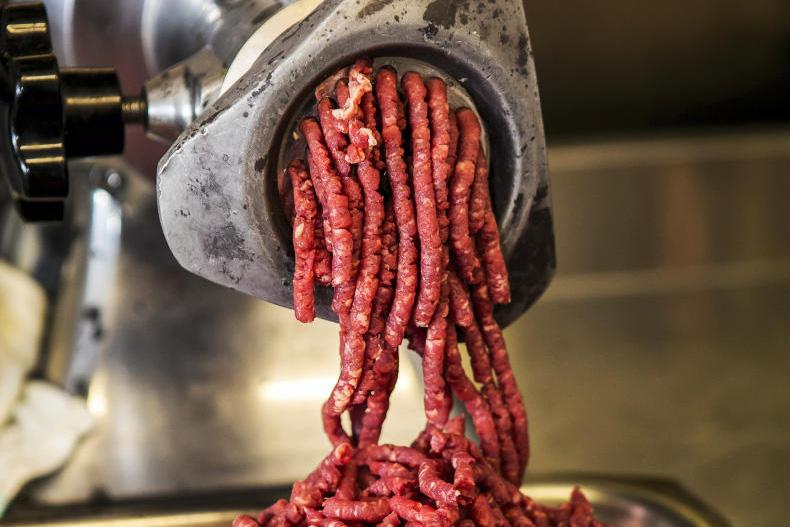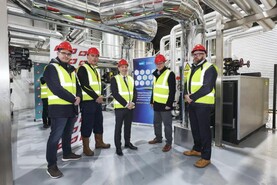The beef factory price league published in the Irish Farmers Journal last week reveals a wide spread of prices paid by factories in 2018 across all types of cattle and all grades.
By taking four grades from steers, heifers, young bulls and cows, we have 16 different categories on which to score factory performance.
In doing so we have to recognise that there are some categories such as U=3= cows where the numbers killed in each factory are tiny.
The UK part of the business continues under the Dunbia branding while Dunbia’s factory in Slane is now trading under Dawn’s branding
Similarly, some factories such as Jennings don’t kill either young bulls or cows, and are therefore not listed in these categories.
Last year was the first full year of the Dawn – Dunbia merger in which Dawn has the majority shareholding.
The UK part of the business continues under the Dunbia branding while Dunbia’s factory in Slane is now trading under Dawn’s branding.
It was also the year when Kepak returned to the abattoir business in Britain after a gap of more than a decade through the acquisition of the red meat division of the 2Sisters business.
This consolidation will further strengthen both Kepak’s and Dawn’s place in the British supermarket sector, adding to its already premier supply position in the burger and manufacturing meat business.
Prices paid to farmers
In terms of prices paid to farmers, both ABP and Kepak feature strongly at the top end of the tables across all categories while Dawn is well down the table, particularly for good grading cattle though they are more competitive for plainer cattle and cows.
However, when awarding the medals for table-topping positions, it is Foyle’s Donegal factory that tops the table, with five number one positions, three second places and one third place.
Jennings Ballinrobe has always featured at the top end of the table and does again this year with two top positions, two seconds and two thirds, all for buying steers and heifers.
Foyle and Jennings
While these are standalone plants in the Republic of Ireland, Foyle has two abattoirs in Northern Ireland and two in England so it is a substantial cattle buyer.
It also has a wide portfolio of customers, is a major supplier of Tesco and has been a long-term supplier of meat used in McDonald’s burgers in the UK.
Jennings is a one-factory business in Co Mayo which specialises in just steers and heifers
It is currently in the process of establishing its own burger manufacturing business at its Omagh, Co Tyrone, factory which is now the group headquarters.
It has its own payment grid which adds a 10c/kg premium for prime beef in the 320kg to 380kg weight range and an Aberdeen Angus scheme bonus which also increases prices reported.
Jennings is a one-factory business in Co Mayo which specialises in just steers and heifers, bought mainly off the grid and sold primarily in the domestic Irish market.
It is consistently at the top end of the tables for steers and heifers and again is known to be demanding in the type of cattle it buys, with a preference for traditional breeds.
ABP
As well as picking up a number of medals, all ABP factories are strong buyers of top-quality steers and comfortably in the top half of the table.
They have less interest in the plainer P+3= grading steers where they are very much in the bottom half.
On heifers, the ABP factories are in the top half of the table across all grades and their links with the Irish Angus Producer Group and Hereford Prime Scheme bonuses lifts prices reported.
On young bulls they have fewer top half positions, with placings on plain P+3= young bulls, which are small in number, very much in the bottom half of the leagues.
With the exception of Waterford, Nenagh and Clones, ABP is not at the top end of the cow buying leagues across the grades. Overall, it has plenty of top 10 positions
Kepak
Kepak put in a strong performance for young bulls in 2018 with a clean sweep of table-topping positions in the young bull category and all the factories in the group are well positioned towards the top of the table for young bulls.
They are much less prominent for steers and heifers with the exception of the Clonee factory which tops the tables in two categories of heifers.
Similarly, on cows they are mainly in mid-table positions. Across the group they had six table-topping positions, twice as many as ABP though in terms of top three placings, ABP was one ahead on 14 compared with 13 for Kepak.
Dawn
With the Dunbia venture giving the Dawn group huge additional access to the British supermarket trade as well as its long-established McDonald’s business, we might have expected Dawn to have a higher position in the league tables.
Its strength seems to be in cows and plainer cattle which suggests the manufacturing beef for the burger business has a priority over supermarket trade in Ireland.
Dawn is very much in third place compared with ABP and Kepak overall, and one to watch for improvement in 2019.
Independents
Though ABP, Kepak and Dawn dominate the Irish beef kill, there remain a number of standalone factories.
Liffey has three sites and came second in the table for R=3= cows and has a third place for O=3= cows.
Ashbourne has a bonus payment for pedigree Limousin cattle and is a strong buyer of good cows.
With British supermarket businesses looking at rationalising supply lines over the past decade, it is difficult for a standalone factory to provide the level of service they require, which extends to retail packing.
While the prices reported tend to leave the standalone factories at the lower end of the tables, they will often be more flexible in terms of specification where they are trading on an open market.






 This is a subscriber-only article
This is a subscriber-only article










SHARING OPTIONS: